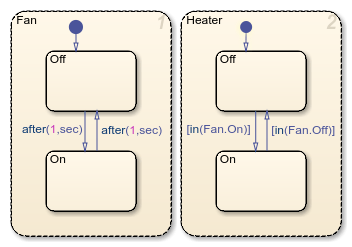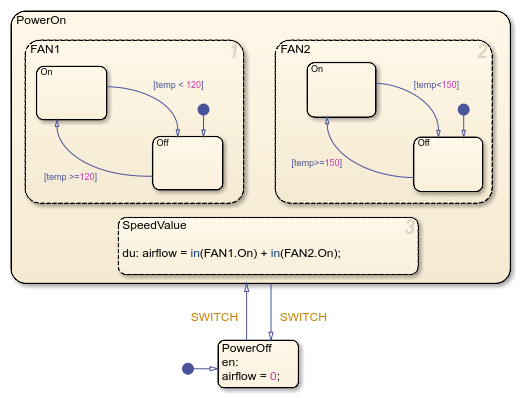in
Prüfen der Zustandsaktivität
Syntax
Beschreibung
in( gibt 1(state_name)true) aus, wenn der Zustand state_name aktiv ist. Anderenfalls gibt der Operator 0 (false) zurück.
Beispiele
Tipps
Um die Zustandsaktivität zu ermitteln, führt ein Stateflow®-Diagramm eine lokalisierte Suche der Zustandshierarchie durch. Das Diagramm führt keine umfassende Suche aller Zustände durch und stoppt nicht nach dem ersten Treffer. Um die Chance zu verbessern, ein einzigartiges Suchergebnis zu finden:
Geben Sie den Namen des Zustands mit der Punktschreibweise an.
Geben Sie den Zuständen einzigartige Namen.
Verwenden Sie Zustände und Boxen als Behälter, um den Umfang der Pfadauflösungssuche zu begrenzen.
Zudem kann in einem Diagramm nicht die Bedingung in zum Auslösen von Aktionen auf Basis der Aktivität der Zustände in anderen Diagrammen verwendet werden.
Weitere Informationen finden Sie unter Resolution of State Activity.
Versionsverlauf
Eingeführt vor R2006a

